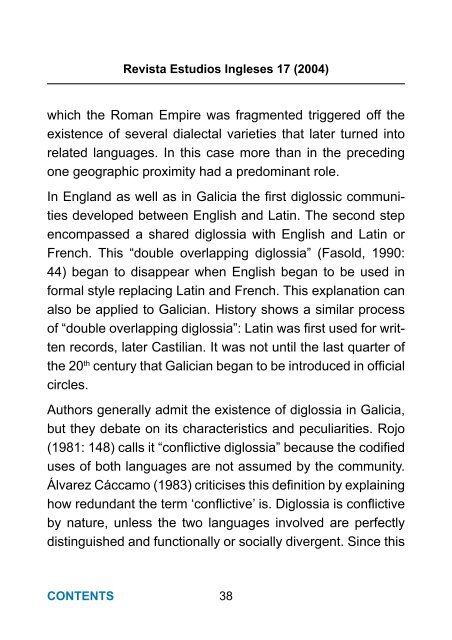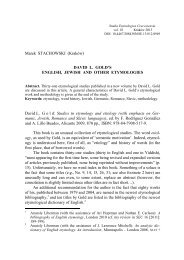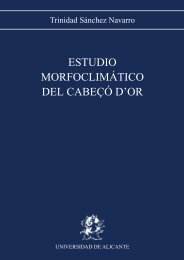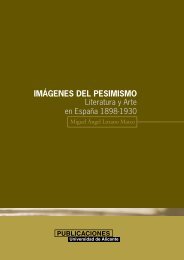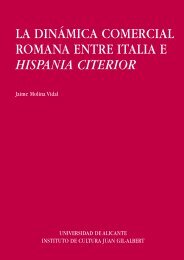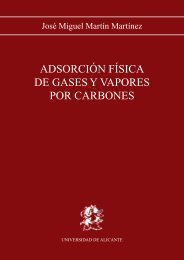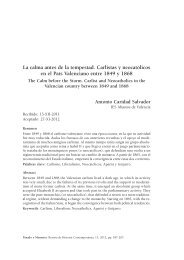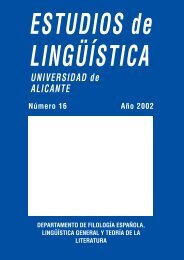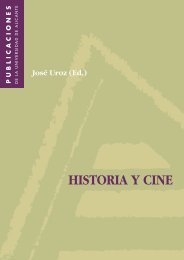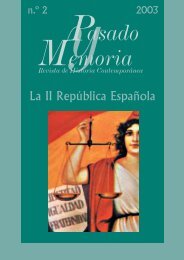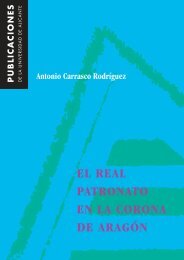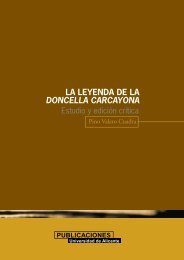English and Galician in the Middle Ages - Publicaciones ...
English and Galician in the Middle Ages - Publicaciones ...
English and Galician in the Middle Ages - Publicaciones ...
You also want an ePaper? Increase the reach of your titles
YUMPU automatically turns print PDFs into web optimized ePapers that Google loves.
Revista Estudios Ingleses 17 (2004)<br />
which <strong>the</strong> Roman Empire was fragmented triggered off <strong>the</strong><br />
existence of several dialectal varieties that later turned <strong>in</strong>to<br />
related languages. In this case more than <strong>in</strong> <strong>the</strong> preced<strong>in</strong>g<br />
one geographic proximity had a predom<strong>in</strong>ant role.<br />
In Engl<strong>and</strong> as well as <strong>in</strong> Galicia <strong>the</strong> fi rst diglossic communities<br />
developed between <strong>English</strong> <strong>and</strong> Lat<strong>in</strong>. The second step<br />
encompassed a shared diglossia with <strong>English</strong> <strong>and</strong> Lat<strong>in</strong> or<br />
French. This “double overlapp<strong>in</strong>g diglossia” (Fasold, 1990:<br />
44) began to disappear when <strong>English</strong> began to be used <strong>in</strong><br />
formal style replac<strong>in</strong>g Lat<strong>in</strong> <strong>and</strong> French. This explanation can<br />
also be applied to <strong>Galician</strong>. History shows a similar process<br />
of “double overlapp<strong>in</strong>g diglossia”: Lat<strong>in</strong> was fi rst used for written<br />
records, later Castilian. It was not until <strong>the</strong> last quarter of<br />
<strong>the</strong> 20 th century that <strong>Galician</strong> began to be <strong>in</strong>troduced <strong>in</strong> offi cial<br />
circles.<br />
Authors generally admit <strong>the</strong> existence of diglossia <strong>in</strong> Galicia,<br />
but <strong>the</strong>y debate on its characteristics <strong>and</strong> peculiarities. Rojo<br />
(1981: 148) calls it “confl ictive diglossia” because <strong>the</strong> codifi ed<br />
uses of both languages are not assumed by <strong>the</strong> community.<br />
Álvarez Cáccamo (1983) criticises this defi nition by expla<strong>in</strong><strong>in</strong>g<br />
how redundant <strong>the</strong> term ‘confl ictive’ is. Diglossia is confl ictive<br />
by nature, unless <strong>the</strong> two languages <strong>in</strong>volved are perfectly<br />
dist<strong>in</strong>guished <strong>and</strong> functionally or socially divergent. S<strong>in</strong>ce this<br />
CONTENTS<br />
38


